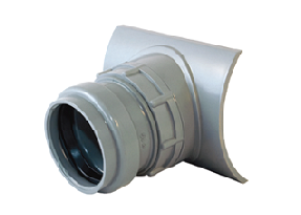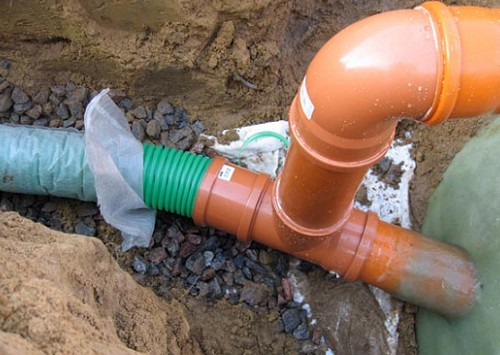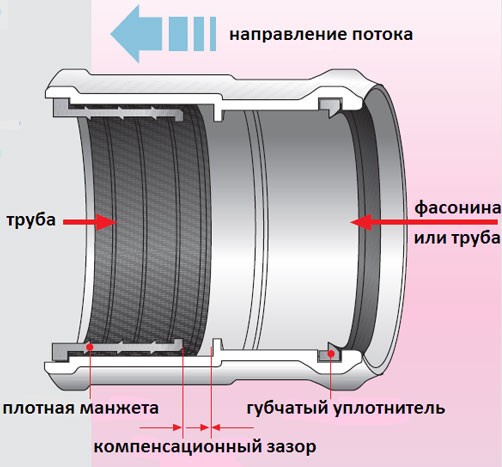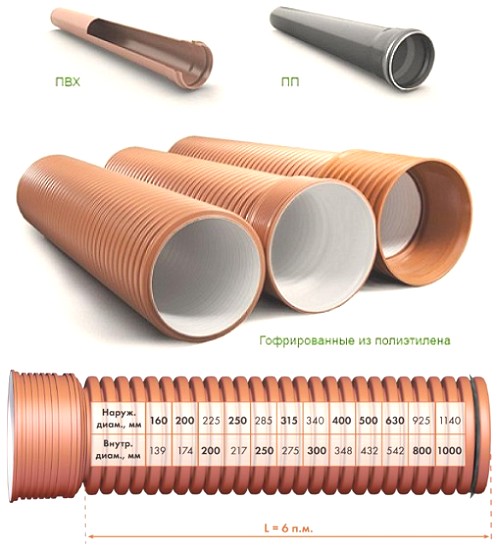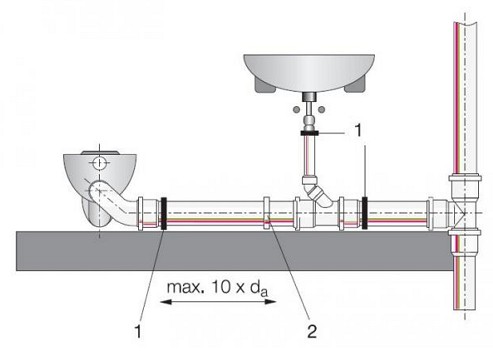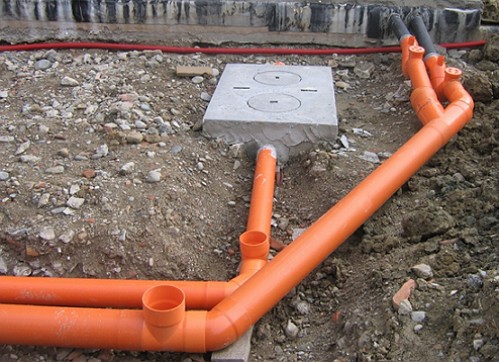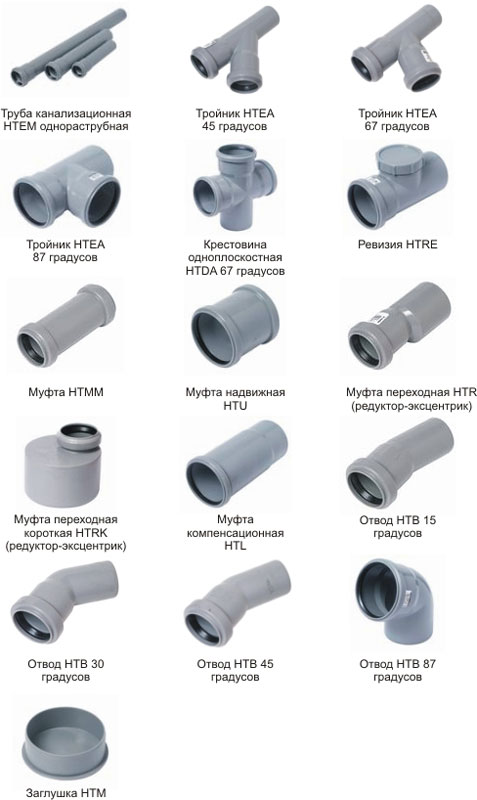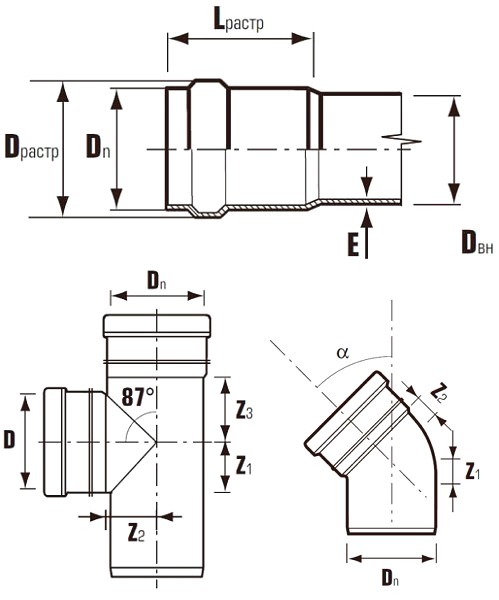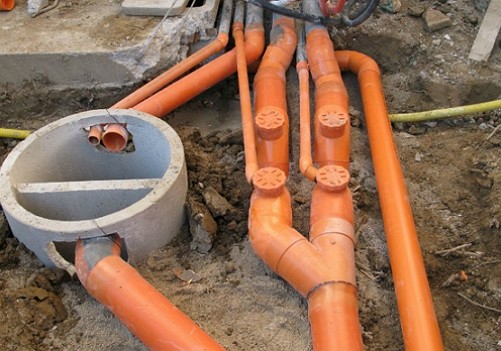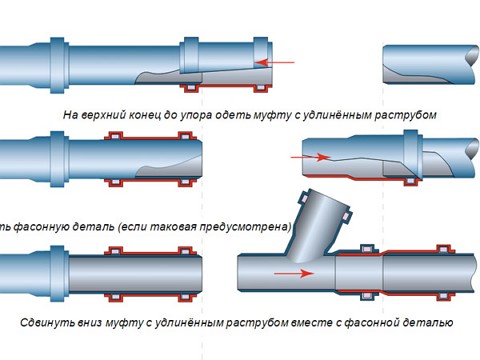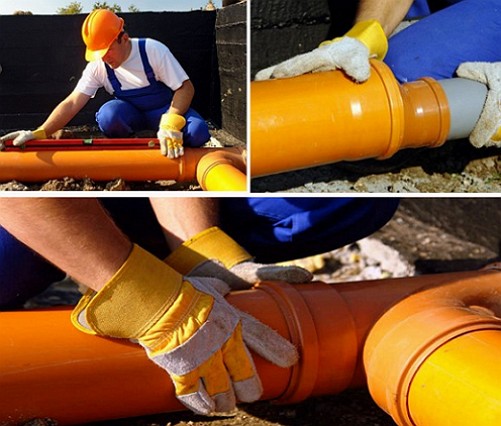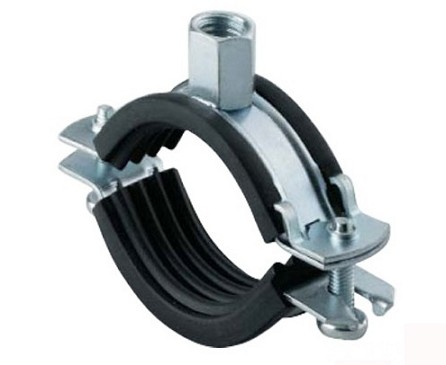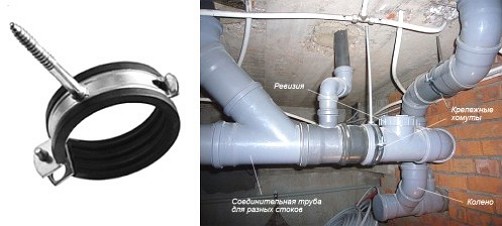Measures for creating or reconstructing sewage systems are the responsibility of the installation time for pipes with the best performance. The selection of pipes must be carried out according to the criteria: material of manufacture, diameter, shape and type of sewage configuration. All useful advice on the selection, calculation and layout of pipes in this case are appropriate and justified.
It should not be forgotten that the installation of sewerage is subject to and regulated by rules and regulations, as well as mandatory consistency and gradualness.
Content
We organize the sewage system
selection of pipes and fittings by type
Pipes by purpose
With the self-organization of sewerage, pipes of a certain nomenclature, special chamfers (sockets) and fittings are supposed to be used.
Sewer pipes are distinguished by their location and purpose for the groups:
- external sewerage with the delivery of drains to the discharge.
- for internal sewerage with the collection of drains and their delivery to the system.
The location and location of the external sewage pipe, bearing the load of transport and soil, should create resistance to dynamic external influences. According to the current norms and regulations, it is recommended to lay the sewer pipes below the depth of freezing of the soil.
Peculiarities of external sewage pipes are their increased chemical resistance to aggressive environment, mechanical rigidity due to the corrugated surface and accessible installation.
Sewage pipes of the internal installation are designed for transportation of drains heated to a certain temperature under pressure.
We add that strict requirements are not imposed on the sewage pipe of the internal installation due to the insignificant load of the internal sewage system.
Selection of pipes by material
The sewage pipes according to the material of manufacture are divided into the following types:
- cast iron and steel
- ceramic
- polymer from plastic (PVC, PVC-np, PP).
We will make a reservation that cast iron, steel and ceramic sewer pipes are rarely used because of high prices. The budget option of the sewerage system is polymer pipes. Where and which pipes should I use?
It is known that PVC pipes are safely used for internal gravity sewerage as central risers and connections. Pipes from PVC-np are used in any type of sewerage pressure and non-pressure.
PP pipes, which have increased flexibility and amorphousness, are used exclusively in internal sewerage.
Helpful Tips
Let's tell you, the external sewage pipes are divided into classes: light, medium and heavy, marked SN2, SN4 and SN8, respectively. For example, SN2-SN4 pipes are designed for a territory with a low motor transport voltage.
Detailed information on each class can be borrowed from the catalog of sewer pipes. For local sewerage external demanded are corrugated pipes ø 250-280 mm, laid down to a depth of 10-15 m
Pipes for external use are painted in orange or gray.
Fitting
Installation of sewage pipes involves the use of devices for connecting pipes between each other (fittings).
In accordance with the installation method, sewer fittings can be: threaded, flanged and self-locking.
Add that PVC pipes and fittings are connected with the use of O-rings.
schemes and calculation
The simplest scheme of external sewerage is an executive axonometric scheme from specialist designers. Larger, such a sewage scheme consists of external and internal networks, including a common riser, a pipeline with sewerage elements and an external pipeline to a reservoir-collector.
The internal sewerage network is represented by a plastic pipeline, the outside network by a similar pipeline of PVC pipes of a different diameter, a collector and a septic tank.
It will be necessary to calculate the diameter of the pipes of both networks.
Helpful Tips
Calculation of the diameter of external sewage pipes
The components of the external installation of sewage pipes are based on the calculated data: the diameter of the pipes entering and forming the sewage system. According to the norms and rules this parameter is calculated according to the average daily discharge volumes, according to which the consumption limit is intended for pipes ø 150 and 200 mm. In addition to the estimated diameter of the "subway" pipes, it is recommended to take into account the slope for placing the pipes in the trench at a rate of 2.5 cm per 1 running meter. pipeline.
Calculation of the diameter of internal sewer pipes
According to experts, pipes ø 50 mm (connection of a sink, a sink and a bath) and 100 mm for a riser of sewer and fan, and also connection of a toilet bowl are recommended for a lining of the internal water drain. The internal sewage system is installed with a slope of 3 °.
Installation of sewer pipes
The technology of installing sewer pipes for external laying and the device of the internal network is identical: lengths of the required size are collected in the pipeline or riser by simple screwing on the principle of "pipe" - "tee" - "withdrawal" - "plug".
The joint density is provided by a special chamfer and a rubber sealing sleeve.
But the complexity of the installation is shown in the place of production of the sewer riser and interface with the "subway".
For the installation of risers and main lines of internal sewerage will be involved:
- bends with connecting branch pipes
- inspection hatches and fastening units
- expansion joints
- pipes.
The stages of installation are: preparation and gluing of pipes, their subsequent fastening by marking, crimping.
preparation and bonding
Installation of sewage pipes begins with fitting the connecting parts according to the scheme. Recall that the sewerage assembly starts from the top down - from the septic tank to the house and sanitary ware. The next stage is the marking of the pipes from the socket and the fitting to the next element. The bonded surface is cleaned from burrs. Then, to ensure the sealing of the joints, gluing of the elements is carried out. Let's say that the pipe should enter the socket 2/3 freely.
clamping
The fixing of sewer pipes is carried out on the stops located under the base of the bell. On horizontal sections of the mains, the distance between the stops is up to 40 cm, on vertical ones up to 1 m. Grommets and fasteners are placed in the junctions of pipes and thrust collars.
The final stage of installation of the external and internal sewage system is crimping, the purpose of which is to check the tightness of the system.
Useful tips for laying outdoor sewage are shown in the video.


